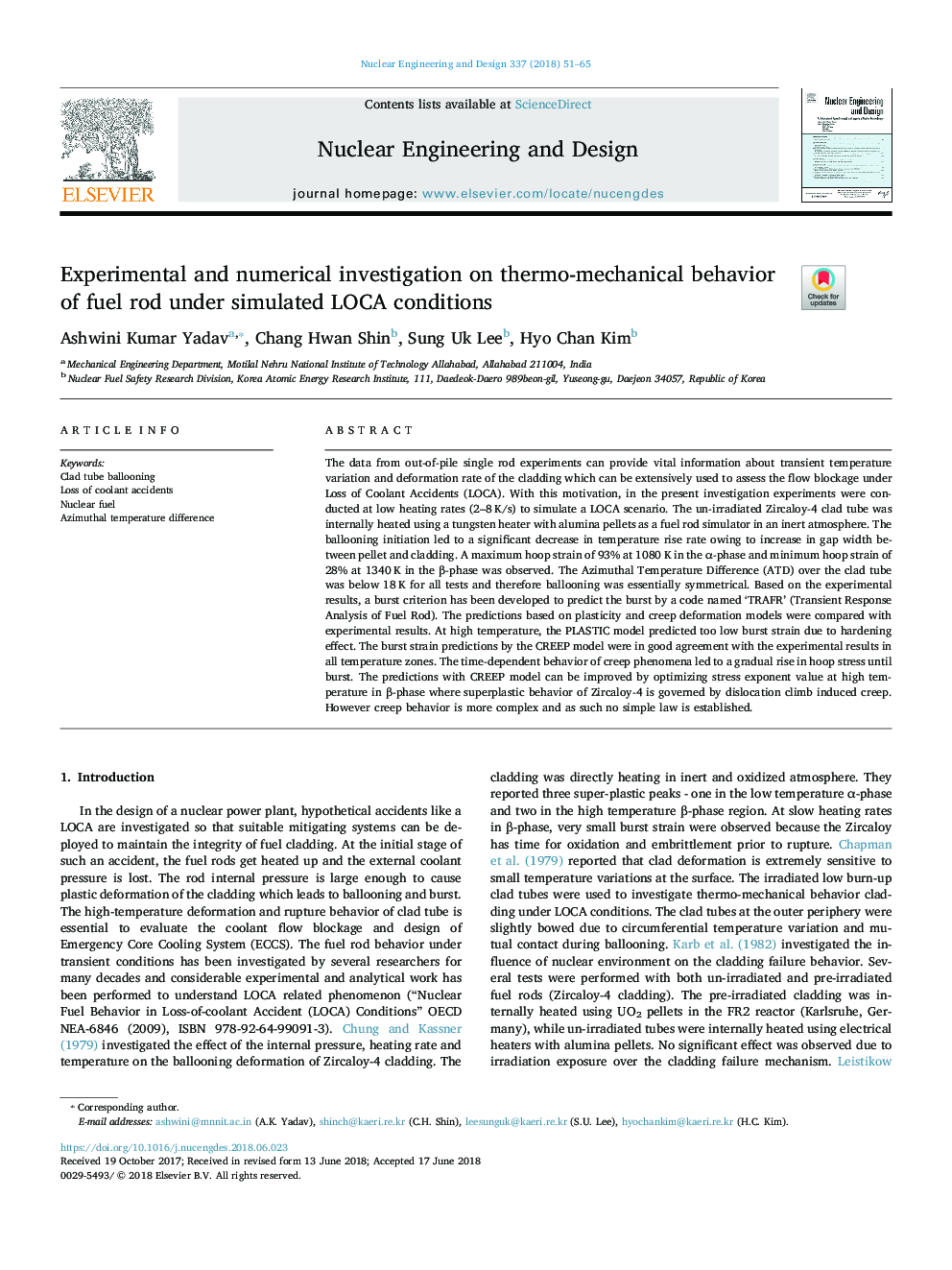| کد مقاله | کد نشریه | سال انتشار | مقاله انگلیسی | نسخه تمام متن |
|---|---|---|---|---|
| 6758544 | 1431384 | 2018 | 15 صفحه PDF | دانلود رایگان |
عنوان انگلیسی مقاله ISI
Experimental and numerical investigation on thermo-mechanical behavior of fuel rod under simulated LOCA conditions
دانلود مقاله + سفارش ترجمه
دانلود مقاله ISI انگلیسی
رایگان برای ایرانیان
کلمات کلیدی
موضوعات مرتبط
مهندسی و علوم پایه
مهندسی انرژی
مهندسی انرژی و فناوری های برق
پیش نمایش صفحه اول مقاله

چکیده انگلیسی
The data from out-of-pile single rod experiments can provide vital information about transient temperature variation and deformation rate of the cladding which can be extensively used to assess the flow blockage under Loss of Coolant Accidents (LOCA). With this motivation, in the present investigation experiments were conducted at low heating rates (2-8â¯K/s) to simulate a LOCA scenario. The un-irradiated Zircaloy-4 clad tube was internally heated using a tungsten heater with alumina pellets as a fuel rod simulator in an inert atmosphere. The ballooning initiation led to a significant decrease in temperature rise rate owing to increase in gap width between pellet and cladding. A maximum hoop strain of 93% at 1080â¯K in the α-phase and minimum hoop strain of 28% at 1340â¯K in the β-phase was observed. The Azimuthal Temperature Difference (ATD) over the clad tube was below 18â¯K for all tests and therefore ballooning was essentially symmetrical. Based on the experimental results, a burst criterion has been developed to predict the burst by a code named 'TRAFR' (Transient Response Analysis of Fuel Rod). The predictions based on plasticity and creep deformation models were compared with experimental results. At high temperature, the PLASTIC model predicted too low burst strain due to hardening effect. The burst strain predictions by the CREEP model were in good agreement with the experimental results in all temperature zones. The time-dependent behavior of creep phenomena led to a gradual rise in hoop stress until burst. The predictions with CREEP model can be improved by optimizing stress exponent value at high temperature in β-phase where superplastic behavior of Zircaloy-4 is governed by dislocation climb induced creep. However creep behavior is more complex and as such no simple law is established.
ناشر
Database: Elsevier - ScienceDirect (ساینس دایرکت)
Journal: Nuclear Engineering and Design - Volume 337, October 2018, Pages 51-65
Journal: Nuclear Engineering and Design - Volume 337, October 2018, Pages 51-65
نویسندگان
Ashwini Kumar Yadav, Chang Hwan Shin, Sung Uk Lee, Hyo Chan Kim,